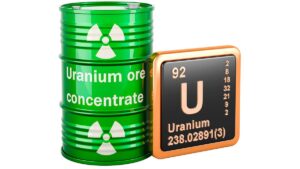Graphite production could be 500pc per cent higher by 2050: World Bank

Pic: Getty
By 2050, annual graphite production will need to grow 500 per cent on 2018 levels to meet demand from electric vehicles and stationary storage, according to recent estimates from World Bank Group.
Roskill says the updated ‘Minerals for Climate Action: The Mineral Intensity of the Clean Energy Transition’ report from World Bank highlights graphite as a major critical material for energy storage.
“It predicts graphite to account for 54 per cent of all mineral demand from energy storage through to 2050, much higher than that for nickel (19 per cent) and eclipsing demand for cobalt (6 per cent), lead (6 per cent), manganese (6 per cent) and lithium (4 per cent),” Roskill says.
“While lithium often steals the limelight because of its role in lithium-ion batteries, large quantities of graphite are also required in the anodes of these batteries, which are vital in the booming applications of EVs and stationary storage.”
A low-carbon future will be very mineral intensive because clean energy technologies need more materials than their fossil-fuel-based alternatives, World Bank says.
Graphite is considered a very ‘high impact’ mineral (quadrant 2, below), because although it only features in a small number of technologies, its level of future demand is much greater than current production levels.
In contrast, the overall demand from energy technologies relative to production (in percentage terms) is not as dramatic for the more widely used copper and nickel in quadrant 4.
“Graphite demand increases in both absolute and percentage terms since graphite is needed to build the anodes found in the most commonly deployed automotive, grid, and decentralised batteries,” World Bank writes.
“About 4.5 million tonnes of graphite is needed to be produced annually by 2050, or a cumulative of 68 million tonnes.”
High risk, high reward
But predictions like this amount to educated guesses, especially scenarios that go out to 2050. There are numerous ways this outlook could change.
In the 1960s, for example, projections about technology in the 2000s were obsessed with plastic. Even our roads would be made from the stuff, they said.
For ‘high impact’ minerals like graphite, there’s a risk that technological disruption could significantly impact demand post-2030.
“With energy storage having the highest level of uncertainty post-2030 given the number of energy storage sub technologies currently at the research and development (R&D) and pilot stages, as well as different policy choices and market forces, concentrated minerals have the highest level of demand risk, particularly for producers of these minerals,” World Bank writes.
For example, solid-state batteries – which are reportedly years from commercialisation – could replace the liquid electrolyte in conventional lithium-ion batteries with a solid alternative such as a polymer or ceramic.
“Should solid-state batteries play a major role from 2030 onward, there may be implications for the demand of some minerals used in energy storage applications,” World Bank writes.
“Graphite demand could fall as the graphite anode is replaced by lithium.”
Related Topics

UNLOCK INSIGHTS
Discover the untold stories of emerging ASX stocks.
Daily news and expert analysis, it's free to subscribe.
By proceeding, you confirm you understand that we handle personal information in accordance with our Privacy Policy.








